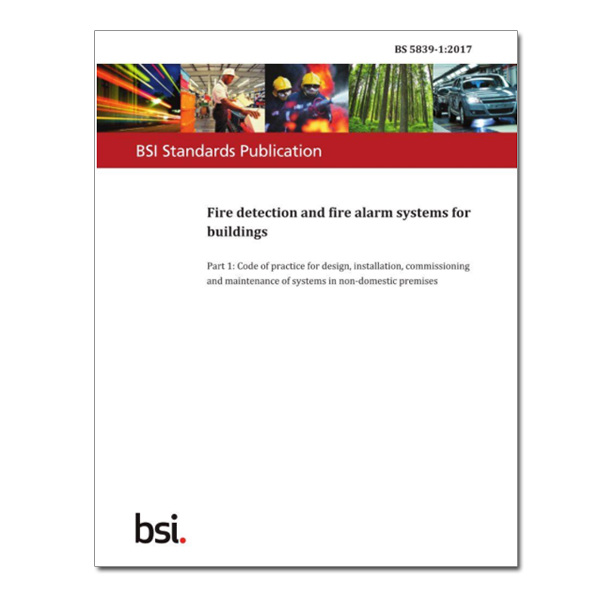Here’s how to prepare for your assessment, an important part of your BAFE Fire Detection and Fire Alarm Systems Scheme (BAFE SP203-1).
Your business certification is conditional on the results of your assessment. We will contact you when your business assessment is due. Please remember it’s your responsibility to ensure your business is booked in for an appointment.
The assessment in a nutshell
The assessment is in two parts: management system review, and technical assessment.
- The assessor will review your business’s compliance with applicable standards, competence and qualifications.
- Successful assessment will result in certification, meaning your business will be approved to display the BAFE logo. Your business will also be added to the BAFE register as a fire detection system provider.


You’ll need access to:
- The current edition of BS 5839 Part 1 Fire detection and fire alarm systems for buildings. Your business needs to follow its requirements and recommendations.
- Additional technical documents – relevant documents including the latest issues of the Wiring Regulations (BS 7671) and the BAFE SP203-1 Fire Detection and Fire Alarm Systems scheme document.
You’ll need to demonstrate:
- Suitable test instruments and accuracy system. Is your business using the right equipment to test and verify the fire alarm systems? Test instruments need to be calibrated and traceable, with a record of the accuracy of your instruments.
- At least £2m of public liability insurance is required, covering all work being undertaken or within the scope of application.
- A minimum of £250k professional indemnity insurance (if your business undertakes the design module). This covers your business for any problems relating to professional advice or service. It’s separate from the public liability insurance.
- Complaint process, and record of any remedial actions undertaken.
- List of all work in progress.
- A list of all work completed since your last assessment.
- Records of the competence and supervision of the person(s) involved in your business’s fire alarm work. This also applies to subcontractors.
- A written health & safety policy and procedures and risk assessment(s) for identifying and controlling the risks associated with your business.
- Safe isolation re-energisation of installation procedures for fire alarm systems.
- Evidence of design records your business has created for each project.
- Systems for notifying relevant authorities and bodies of the work your business does.
- Nominated lead individual(s) required for each module (design, installation, commissioning, and maintenance) of your business’s fire alarm work. The lead individual must have the appropriate skills, qualifications, knowledge and experience for the module.
- Proof of qualifications, training, experience including continuing professional development (CPD) of competent person(s) responsible for your business’s fire alarm work.
- Copies of compliance and/or certificates issued for the fire alarm systems that have been installed or maintained since the last assessment.
Your site assessment
Your NICEIC assessor will select sufficient (usually one to three) projects reflecting the range, scale and scope of work undertaken by your business to assess. The assessor will go with the lead individual(s) and/or designer to each selected site.
You’ll need to demonstrate:
- The work your business has completed since the last assessment (if you’re an existing customer).
- Safe isolation and re-energisation, competence in inspection and testing, including use of instruments, interpretation of results, and completion of certification.
- Adequacy of supervision, complete with supervision records.
You’ll need to provide:
- Access to the fire detection and/or fire alarm systems, with all applicable certification and/or site records for each site.
- Suitable transport to each site. The assessor will select sites that are ideally within 30 minutes’ travel distance from your business’s contracting office. The lead individual(s) and/or designer will travel with the assessor to the sites.
- Suitable equipment (such as hand tools, step ladder, PPE) to access the installation.
Top tips from the BAFE team
- Don’t assume being certified under an electrotechnical scheme (such as the Approved Contractor or Domestic Installer Scheme) covers fire safety work. It doesn’t.
- If you’re a new customer and you don’t have the BS 5839-1 qualification, contact the NICEIC BAFE team for application options. Phone 0333 015 6626 or email bafe@niceic.com.
- Have back-up sites in case of changes. Remember, these still need to be within 30 minutes of your office ideally.
- If you’re an existing customer, make sure you have evidence available of training, including CPD, and a record of supervision for employees undertaking fire detection and fire alarm system work. This needs to cover all employed persons, including subcontractors.
- Be ready. Use the checklists above or in NICEIC’s BAFE Scheme Guide to make sure you have everything you need.
A word from our head of assessment
(can we get this reworded?)
Supervision and CPD are key, says NICEIC Head of Assessment Dan Smith.
"I want to stress the importance of supervision and continuing professional development (CPD) for your business as we work to raise industry standards. During a surveillance assessment, your assessor will review your management systems, requiring proof that all workers involved in electrotechnical tasks are competent and supervised. This applies to direct employees, temporary staff, agency workers, and subcontractors, including the self-employed.
Many of you already use effective management systems, and record keeping doesn’t need to be complicated. NICEIC offers free CPD templates on niceic.com and in our newsletters. ECA members can also use eCOMS to support assessment and meet scheme requirements."
Additional resources: